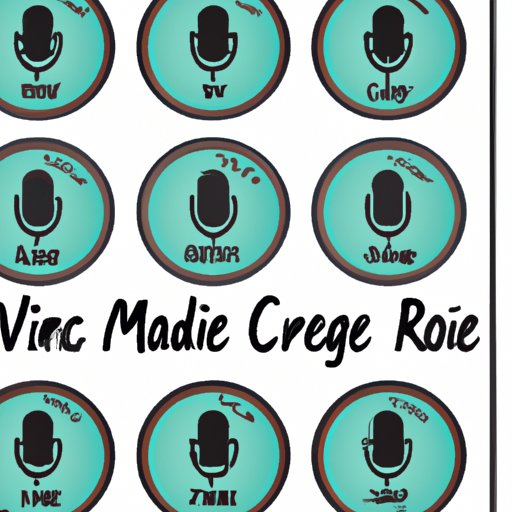Introduction
Voiceover is a growing industry that employs actors, singers, and other talent to provide voices for commercials, animation, video games, and more. If you’ve ever heard an advertisement on the radio or watched a cartoon on TV, then you’ve heard a voiceover artist in action. Becoming a successful voiceover artist requires dedication and practice, but it can be a rewarding career path. This article will explore the steps for becoming a successful voiceover artist, from researching job postings to honing your craft.
Research What Type of Voiceover Work is Available and How to Get Started
The first step in becoming a voiceover artist is to research what type of work is available and how to get started. There are many different types of voiceover work, such as commercials, animation, radio, film, and video games. Each type of voiceover work requires a different skill set and approach, so it’s important to research each one before deciding which type of voiceover work is right for you.
Once you’ve decided on the type of voiceover work you want to pursue, you’ll need to start looking for job postings. You can find job postings online through websites like Voices.com or Backstage. You can also try searching for voiceover work in local newspapers or trade publications. Additionally, you can network with other professionals in the industry to find out about job opportunities.
Create a Demo Reel Showcasing Your Vocal Range and Delivery Style
After researching the types of voiceover work available, the next step is to create a demo reel showcasing your vocal range and delivery style. A demo reel is a compilation of clips demonstrating your vocal range and delivery style. It should include a variety of samples, such as commercials, narration, and character voices. Working with a professional sound engineer can help you create a high-quality demo reel that stands out from the competition.
When creating your demo reel, it’s important to select clips that showcase your best performance. Be sure to choose clips that highlight your vocal range and delivery style. Additionally, make sure the clips are edited together seamlessly and have a consistent sound quality. Finally, keep the demo reel short and to the point – no more than two minutes in length.

Reach Out to Production Companies and Talent Agencies to Find Opportunities
Once you have a demo reel, you can start reaching out to production companies and talent agencies to find opportunities. Research potential production companies and talent agencies to determine which ones might be a good fit for your voiceover work. Once you’ve identified some potential prospects, submit your demo reel to them. Following up with potential agents can help increase the chances of getting hired.
Additionally, you can reach out to producers and casting directors directly to inquire about voiceover work. Sending emails or making phone calls can help you get your name out there and increase your chances of landing a job.

Network with Other Voiceover Artists to Learn the Industry
Networking with other voiceover artists is another important step in becoming a successful voiceover artist. Attending workshops and seminars can help you learn more about the industry and network with other professionals. Joining online forums and discussion groups can also provide valuable insights into the voiceover industry. Participating in networking events like conferences and conventions is another great way to meet other voiceover artists and learn more about the industry.

Take Classes or Lessons to Hone Your Craft
Taking classes or lessons can help you hone your voiceover skills and develop your craft. There are many different types of classes available, from beginner courses to advanced technique classes. Finding a qualified instructor is key – look for someone who has experience in the field and can offer helpful feedback and advice. Once you’ve found a qualified instructor, practice your craft regularly to improve your skills.
According to a study conducted by the National Institute of Voiceover Arts, “Practice is the key to mastering any skill, and voiceover is no exception. Practicing your craft regularly can help you refine your skills and become a better voiceover artist.”
Conclusion
Becoming a successful voiceover artist requires dedication and practice. The steps outlined in this article can help you get started on your journey: research what type of voiceover work is available, create a demo reel showcasing your vocal range and delivery style, reach out to production companies and talent agencies to find opportunities, network with other voiceover artists to learn the industry, and take classes or lessons to hone your craft. With hard work and dedication, you can become a successful voiceover artist.
As voiceover artist Dan Levine once said, “The most important part of being a successful voiceover artist is to never stop learning and improving your craft.” With these tips, you can start on your journey to becoming a successful voiceover artist.
(Note: Is this article not meeting your expectations? Do you have knowledge or insights to share? Unlock new opportunities and expand your reach by joining our authors team. Click Registration to join us and share your expertise with our readers.)
